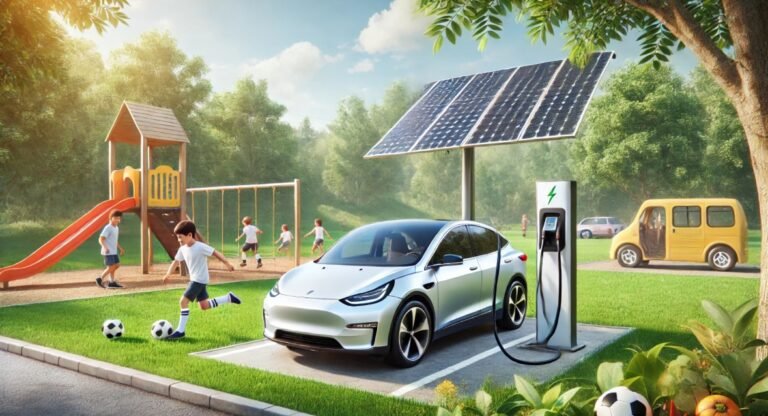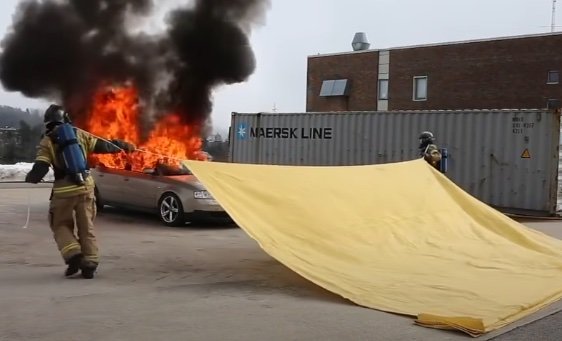CATL’s Revolutionary Battery Tech Reshapes the EV Landscape

Key Developments:
- CATL unveils Shenxing battery capable of adding 520km range in just 5 minutes of charging
- New sodium-ion battery “Naxtra” entering production in December 2025, offering better cold-weather performance
- Freevoy Dual Power Battery technology provides up to 1500km range on a single charge
- Sodium-ion batteries maintain 93% capacity at -30°C and can operate at extreme -40°C temperatures
- Technology advancements position pure electric vehicles to compete directly with hybrid models
China’s Battery Giant Makes Game-Changing Announcements
The electric vehicle industry is witnessing a seismic shift as Chinese battery manufacturer CATL (Contemporary Amperex Technology Co. Limited) unveiled three revolutionary battery technologies at its “Tech Day” event in Shanghai. These innovations directly address the most significant barriers to EV adoption: charging time, range anxiety, and cold-weather performance.
For years, potential EV buyers have hesitated due to concerns about charging duration and range limitations, especially in countries like Australia where weekend road trips can cover vast distances. Now, CATL’s breakthroughs promise to make these concerns obsolete, potentially accelerating the global transition to electric mobility.
Ultra-Fast Charging: 520km in Five Minutes
The headline-grabbing announcement from CATL’s Tech Day was the second-generation Shenxing battery, which can provide 520 kilometers (323 miles) of driving range with just five minutes of charging. This development represents a crucial milestone in EV evolution – approaching the convenience of traditional fuel station visits.
“By combining two distinct battery technologies in one package, we’re able to optimize both high-power performance and extended range capabilities,” explained a CATL spokesperson.
The new Shenxing battery boasts impressive technical specifications:
- Total range of 800 kilometers (497 miles)
- Peak charging rate approaching 12C
- Maximum charging power exceeding 1.3 megawatts
- Adds approximately 2.5 kilometers of range per second of charging
The technology significantly outperforms competitors, including BYD’s recently announced system offering 400km in five minutes and Tesla’s most advanced charging systems that provide 320km in 15 minutes.
Cold-Weather Performance Breakthrough
One of the most persistent challenges for electric vehicles has been their diminished performance in cold weather. Traditional lithium-ion batteries suffer dramatic range reductions and charging limitations at low temperatures – a major deterrent for consumers in colder regions.
CATL’s demonstration showcased the Shenxing battery charging from 5% to 80% in just 15 minutes at temperatures of -10°C (14°F), a remarkable achievement that addresses this longstanding issue. Even when nearly depleted, the battery can still deliver 830kW (1113.4 hp) of output power.
Sodium-Ion: The Future of Battery Technology
Perhaps the most forward-looking announcement was CATL’s new sodium-ion battery called “Naxtra,” scheduled for mass production in December 2025. This technology represents a potential paradigm shift in the battery industry, offering several advantages over traditional lithium-based cells:
Superior Cold-Weather Performance
The sodium-ion batteries maintain exceptional performance in extreme temperatures. At -30°C (-22°F), they can charge from 30% to 80% in just 30 minutes while retaining 93% of usable capacity. Even more impressively, vehicles can maintain highway speeds of 120km/h at temperatures as low as -40°C (-40°F) with batteries at 0% state of charge – previously unimaginable with conventional lithium-ion technology.
Enhanced Safety Profile
CATL demonstrated the sodium-ion battery’s superior safety through rigorous testing, including multi-sided compression, needle penetration, electric drill penetration, and battery sawing – all without triggering fire or explosions. This represents a significant safety improvement over lithium-based alternatives.
Practical Range Capabilities
Despite being a relatively new technology, the sodium-ion batteries achieve an impressive energy density of 175Wh/kg, enabling:
- Hybrid electric vehicles to achieve pure electric ranges exceeding 200 kilometers (124 miles)
- Pure electric vehicles to reach ranges beyond 500 kilometers (310 miles)
The batteries also support 5C superfast charging and boast a remarkable cycle life of 10,000 charges, suggesting extraordinary longevity.
Material Advantages
Sodium is more abundant and cost-effective than lithium, potentially addressing supply chain concerns that have plagued the EV industry. CATL believes sodium-ion batteries could eventually replace up to half the market for lithium iron phosphate batteries currently dominating the field.
Freevoy Dual Power Battery: Redefining EV Range
The third major innovation unveiled was CATL’s “Freevoy Dual Power Battery,” featuring a dual-core architecture that delivers an extraordinary maximum range exceeding 1500 kilometers (932 miles) on a single charge. This development positions pure electric vehicles to compete directly with hybrid models on range capabilities.
The dual-core design divides a single battery into two independent energy zones:
- A main energy area
- A range extension area
Each zone utilizes different cell materials to leverage their respective advantages. The system implements high-voltage, low-voltage, structural, thermal runaway protection, and thermal management dual-core systems to ensure safety, similar to redundancy concepts in aircraft dual-engine design.
CATL has pioneered self-generating negative electrode battery technology in the range extension zone, eliminating traditional graphite anode materials. This innovation significantly increases energy capacity within the same battery package space while substantially improving energy density.
Critical Considerations: Infrastructure Challenges
Despite these impressive technological breakthroughs, several critical infrastructure challenges must be addressed before consumers can fully benefit from CATL’s innovations:
Charging Network Limitations
While the Shenxing battery can theoretically add 520km in five minutes, this requires charging stations capable of delivering up to 1.3 megawatts of power. Currently, most public fast chargers operate at 50-350kW, far below what’s needed for these ultra-fast charging speeds. Building out this infrastructure will require significant investment and grid upgrades.
Power Grid Capacity
The electrical demands of megawatt-level charging stations would place unprecedented strain on existing power grids. A single station with multiple chargers could require the same electrical capacity as a small neighborhood. Without strategic grid reinforcements and load management systems, widespread deployment of ultra-fast charging infrastructure remains challenging.
Standardization Issues
The EV charging landscape remains fragmented with multiple competing standards and connectors. For CATL’s technologies to reach their full potential, greater standardization of charging protocols and hardware would be necessary across different vehicle manufacturers and charging networks.
Rural and Remote Area Coverage
While 1500km range batteries would significantly reduce charging needs for long-distance travel, comprehensive charging networks remain essential, particularly in countries like Australia with vast distances between population centers. Current infrastructure development largely focuses on urban areas, leaving gaps in rural coverage.
Sustainability Considerations
Increasing battery production to meet growing demand raises questions about sustainable material sourcing, manufacturing processes, and end-of-life recycling. While sodium-ion batteries may reduce dependence on lithium, establishing circular economy principles for battery materials remains a critical challenge.
Global Impact and Market Implications
These technological breakthroughs represent a significant competitive advantage for Chinese EV manufacturers at a time when global markets are already seeing a surge in Chinese electric vehicles. The number of cars shipped from China reached 4.7 million in 2024, triple the amount from just three years earlier, and is projected to reach 7.3 million by 2030.
Australia’s EV market is also expected to grow in 2025, with fresh models from new brands such as Zeekr, Xpeng, Deepal, and Leapmotor arriving and likely to propel sales as price competition intensifies and technology improves.
CATL’s Chief Technology Officer Gao Huan announced that more than 67 new EV models would be powered by Shenxing batteries in 2025, with more than 18 million cars in more than 66 countries potentially benefiting from this technology.
Geopolitical Considerations
Despite these impressive advancements, geopolitical tensions may limit their global impact. Recent trade conflicts between China and Western nations, particularly the United States, could restrict access to these technologies in certain markets.
The U.S. Department of Defense has recently added CATL to its list of Chinese military companies, which could make it more difficult for the company to do business in America. Additionally, China has halted export of rare earth minerals and magnets, suggesting a potential strategy to retain competitive advantages in battery technology.
What This Means for Consumers
For everyday EV consumers, these innovations address three critical pain points:
- Charging time: With the ability to add 520km of range in five minutes, long charging stops during road trips could become a thing of the past.
- Range anxiety: The 1500km range from the Freevoy Dual Power Battery exceeds what most drivers would need for even extended journeys, essentially eliminating range concerns.
- Cold-weather reliability: Improved performance in sub-zero temperatures means EV owners in colder climates no longer need to sacrifice convenience or reliability.
The Future of Electric Mobility
CATL’s trio of innovations signals a turning point for the electric vehicle industry. As these technologies begin appearing in production vehicles over the coming months and years, consumers may finally see electric vehicles that eliminate the compromise between environmental benefits and the convenience of traditional gasoline-powered transportation.
The latest developments have already impacted CATL’s market position, with shares rising by 2.62% following the announcements, pushing its market capitalization above one trillion yuan (137 billion USD).
As charging times decrease, ranges increase, and performance in extreme conditions improves, the final barriers to mainstream EV adoption appear to be falling. For consumers still hesitant about making the switch to electric, these advancements offer compelling evidence that the electric future may arrive sooner than expected.
The question is no longer whether electric vehicles can match the convenience of internal combustion engines, but rather how quickly traditional automakers and infrastructure providers can adapt to this rapidly evolving technological landscape dominated by innovative companies like CATL.
🚗 Techwheel Current – Weekly EV TL;DR
Get the latest breakthroughs and developments in electric transportation — from battery tech to real-world driving experiences — all in a quick 5-minute weekly read.
No fluff, just the essentials. Straight to your inbox every week. ✉️
Subscribe now and start receiving weekly free updates!






